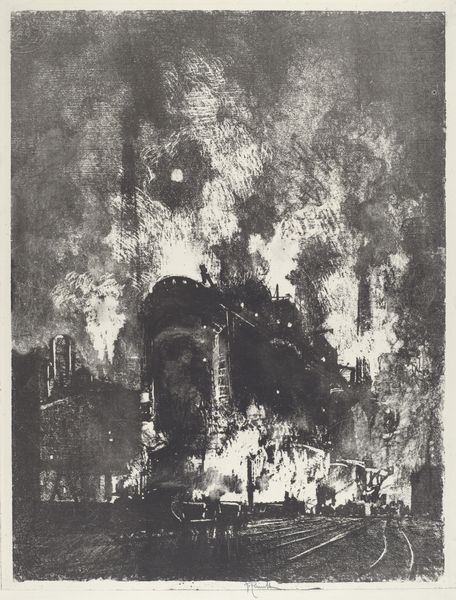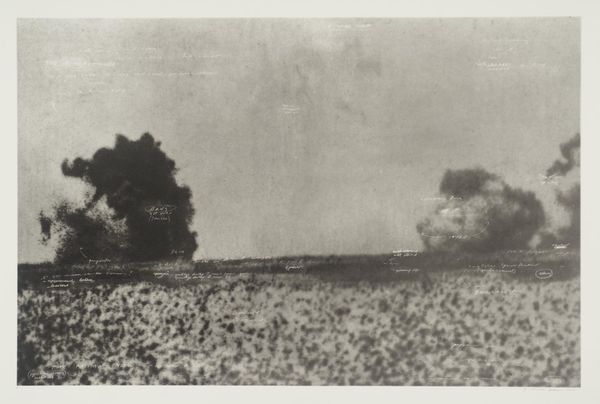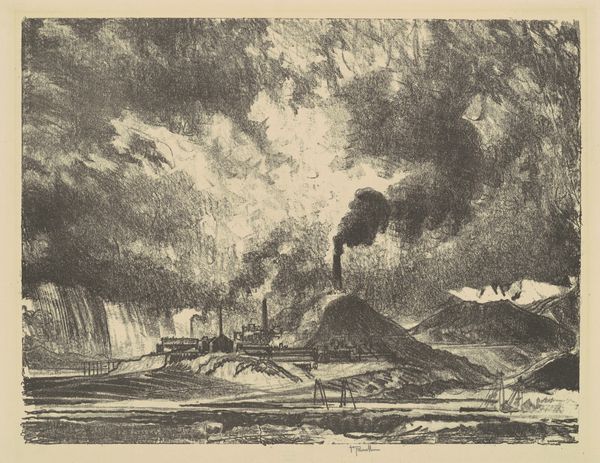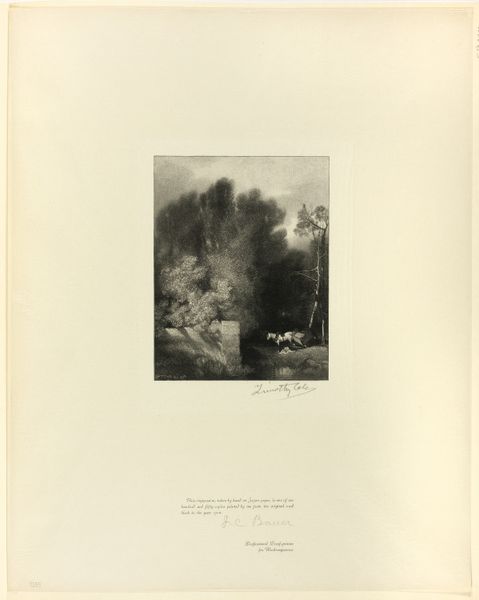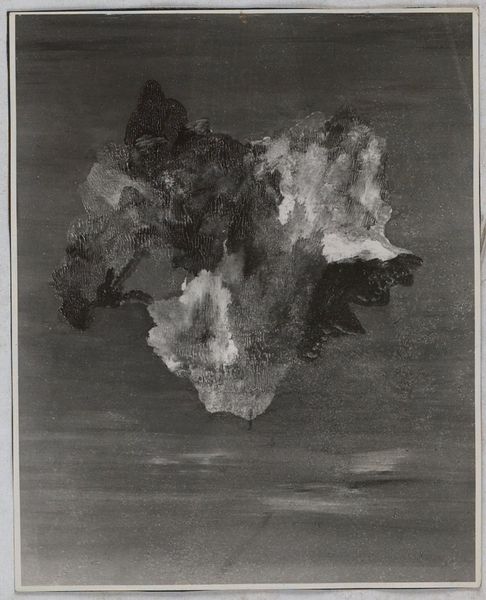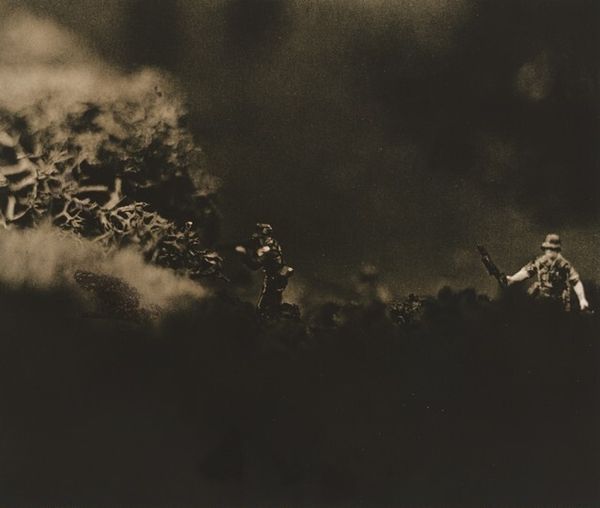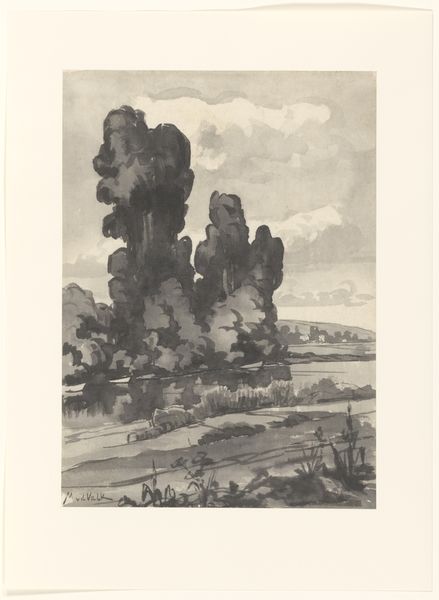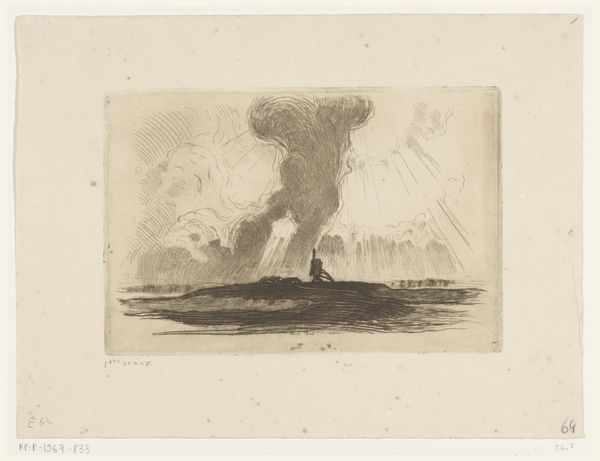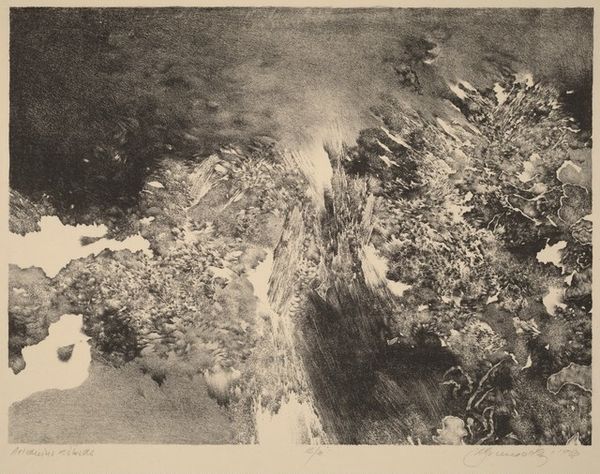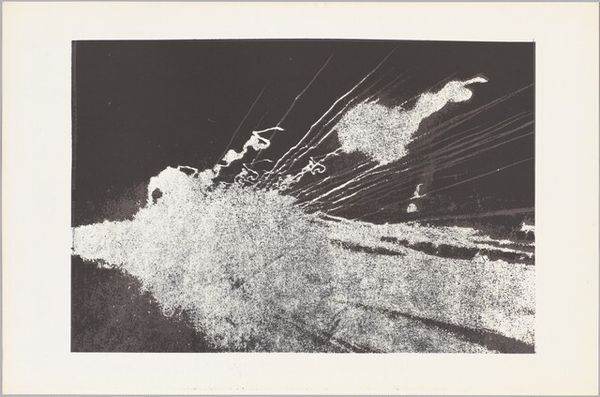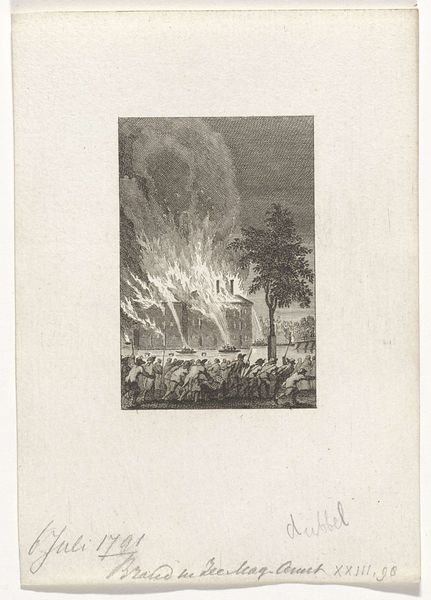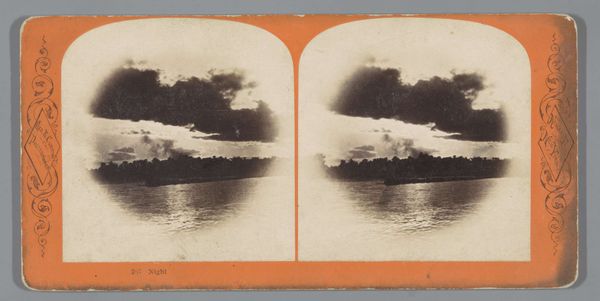
Dimensions: image: 450 x 685 mm support: 540 x 690 mm
Copyright: © Tacita Dean, courtesy Frith Street Gallery, London and Marian Goodman Gallery, New York/Paris | CC-BY-NC-ND 4.0 DEED, Photo: Tate
Editor: Here we have Tacita Dean's "Die Explosion in dem Kanal," or "The Explosion in the Canal." It's a striking image, almost ghostly in its depiction of such a violent event. What strikes you most about this work? Curator: The photogravure printmaking process itself is crucial here. The labor-intensive nature of creating such an image, particularly to depict destruction, raises questions about the value we place on documentation versus direct experience. How does the medium transform our understanding of conflict and its representation? Editor: So, it's not just the image itself, but also how she chose to make it. That's fascinating. Curator: Precisely. The choice of this obsolete process in contemporary art invites us to consider how materiality shapes meaning. Think about the consumption of such imagery, then and now. What’s being sold and what’s being lost in translation? Editor: I hadn't considered it that way. Thank you!
Comments
tate 8 months ago
⋮
http://www.tate.org.uk/art/artworks/dean-die-explosion-in-dem-kanal-p20263
Join the conversation
Join millions of artists and users on Artera today and experience the ultimate creative platform.
tate 8 months ago
⋮
Die Explosion in dem Kanal belongs to a portfolio of twenty black and white photogravures with etching collectively entitled The Russian Ending. The portfolio was printed by Niels Borch Jensen, Copenhagen and published by Peter Blum Editions, New York in an edition of thirty-five; Tate’s copy is the fifth of ten artist’s proofs. Each image in the portfolio is derived from a postcard collected by the artist in her visits to European flea markets. Most of the images depict accidents and disasters, both man-made and natural. Superimposed on each image are white handwritten notes in the style of film directions with instructions for lighting, sound and camera movements, suggesting that the each picture is the working note for a film. The title of the series is taken from a convention in the early years of the Danish film industry when each film was produced in two versions, one with a happy ending for the American market, the other with a tragic ending for Russian audiences. Dean’s interventions encourage viewers to formulate narratives leading up to the tragic denouements in the prints, engaging and implicating the audience in the creative process.
